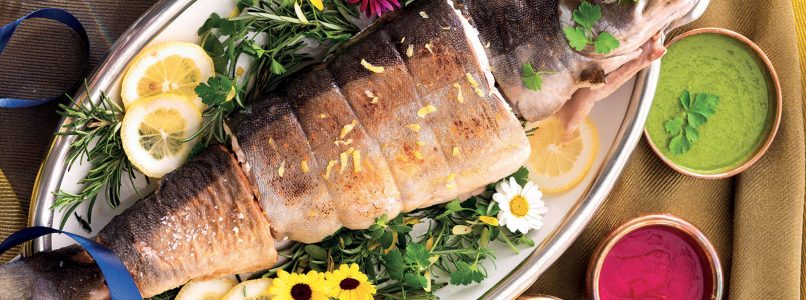We love eating fish and its light and delicate meat tells us a lot about the sea and the lakes to which we are heading to spend the holidays. But the fish also represents one of the most difficult preparations since many people do not know the basic techniques to choose it, clean it and prepare it and find themselves in trouble right from the store. Here are two interesting articles that we recommend you read to understand if the fish is fresh:
Cooking school: how to recognize if the fish is fresh. Buying Guide
Ten clues to see if the fish is fresh
Once the fish is chosen, it is necessary wash it and clean it before starting to cook it. In the case of shellfish for example: grasp the head of the Norway lobster (or shrimp) with the left hand and with the right hand remove the abdominal part. To shell the tails, open them by cutting them with scissors in the center or along the sides. Pull gently to detach the tails in one piece. For some recipes, however, it leaves itself attached. To remove the black gut along the tail, once shelled, pull it with a small knife or tweezers.
Generally proceed as follows:
– release the fish from fins and bowels as soon as possible, to prevent the entrails from transmitting a bad taste to the meat.
– evisceration through the gills should be done only if you intend to stuff the fish, otherwise, proceed with a cut with a sharp knife, or with a pair of sharp scissors, along the ventral line, from the cavity anal up to the gills.
– spreading well with your hands, remove all the entrails and then, with a teaspoon, scrape well to remove any remaining blood.
– this operation can also be done by rubbing the inside of the fish with coarse salt.
– to remove the gills, cut with the knife along the cartilages to which they are anchored, and then cut them with a decisive gesture.
– Finally, wash the fish carefully under cold running water and dry it, dabbing it with kitchen paper.
– this point is necessary scale the fish (unless you want to cook it in a crust of salt): grasp the fish by the tail and vigorously grate with a large knife or with the special scaler in the direction of the head. Rinse and dry with a cloth.
These articles instead show how to clean anchovies and scallops:
How to clean anchovies
How to clean scallops
In some cases it is necessary to prepare the fish by filleting its meat, here is how:
Cooking school: fish filleting
Then there are some fish and shellfish that deserve special attention. Here they are in these articles:
Cooking school: the octopus, get to know it and prepare it
Cooking school: the use of mackerel
What is the difference between lobster and lobster (and how to cook them!)
As for cooking or preparing raw fish, just follow some basic techniques to get good results. Here are some cooking methods to experiment:
The naked and raw fish: the secrets to prepare the tartare
Cooking school: steamed fish, how to prepare it artfully
Cooking school: seared fish, how to prepare it
Cooking school: braised fish, discover the technique
Cooking school: roast fish, all the secrets to prepare it
Cooking school: 5 precious tips for an excellent sea bream with seasonal vegetables
Sea bass with salt
What is the difference between lobster and lobster (and how to cook them!)
And after exploring some techniques related to the preparation of fish, you just have to experiment with 15 simple recipes
















